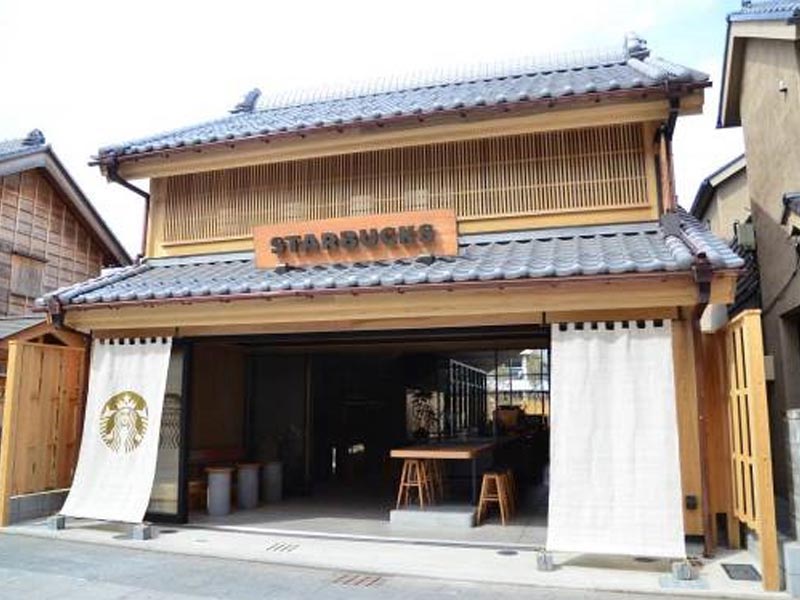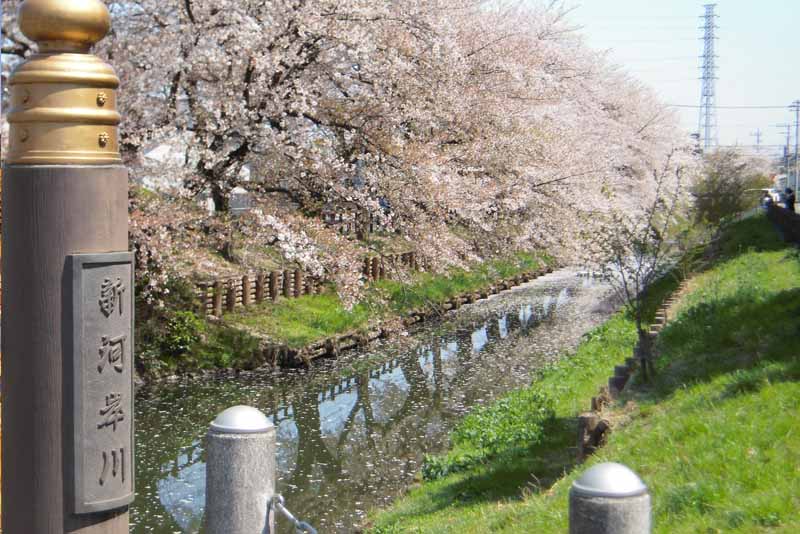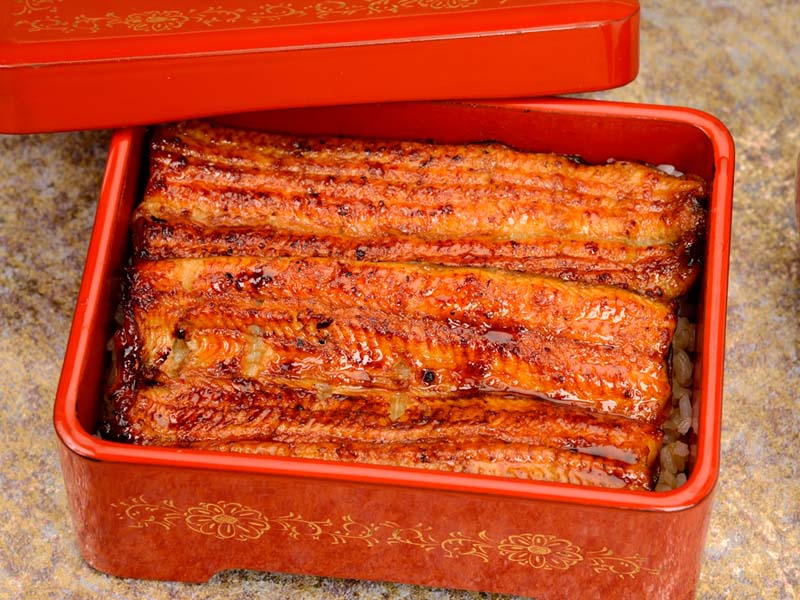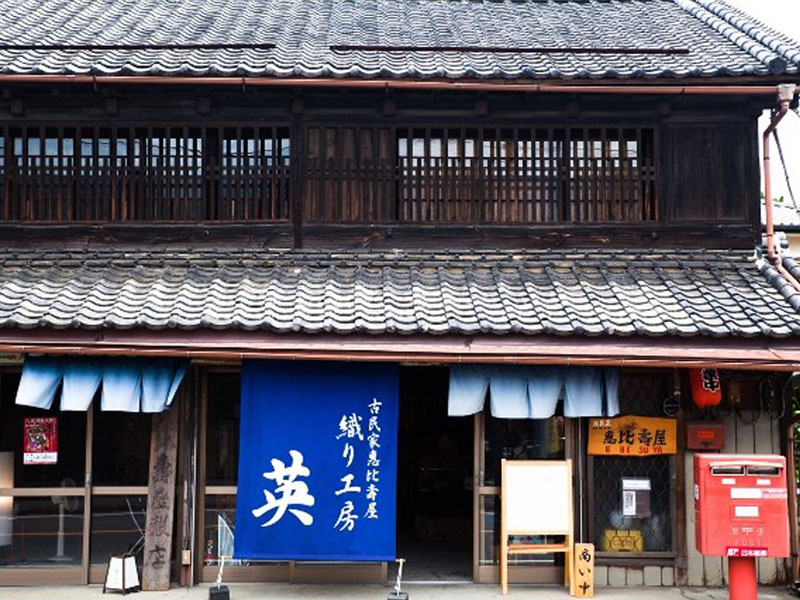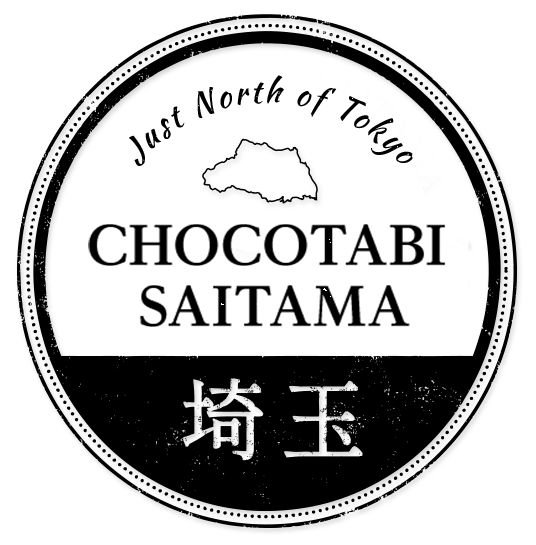Experience unique activities & culture at a Japanese traditional “Kura” town, Kawagoe
When visiting Tokyo there’s no better way to experience a taste of traditional Edo than to spend a day or two in Kawagoe located just north of the capital.
Kawagoe has long been known as ‘Koedo’ which means ‘Little Edo’ for its symbolic extent of architectural properties from the Edo era.
In the past many buildings were made using wood which often led to catastrophic fires.
In Kawagoe, things were no different. In 1893 there was a massive fire which destroyed one third of the town.
After that, many merchants began building ”Kura”. ”Kura” have a fireproof architecture cleverly built to prevent fires and was developed as a form of house for the merchants of Edo, it’s also offered better protection against intruders.
Kura are thick clay walled buildings usually designed following distinct Edo-styled architecture. They were incredibly expensive to build and could only be afforded by the wealthiest merchants.
Guest House Masuya
If you’ve ever thought about a traditional warehouse you might think of a big old building that’s cold and dark inside. In Japan many traditional warehouses were built as kura and in Kawagoe there are many storefront kuras that remain today. The roof of a kura is decorated with ceramic tiles known as kawara and the outer walls are often painted black.
At Guest House Masuya, a kura that was converted into a maisonette style guesthouse, you have the unique opportunity to stay overnight. The kura was built in 1893 after the great fire that destroyed a large part of Kawagoe and has a history of nearly 130 years. (If you take a look at the largest wooden beam on the upper floor you’ll see kanji (Chinese characters) painted on it that show the kura was built at this time. This beautifully converted kura was designed to give a warm and open atmosphere and is completely the opposite of what you might have first imagined when thinking of a warehouse.
The lower floor consists of a main room with bright white walls and light wood flooring creating a welcoming environment. There is also a bathroom (with shower) and separate toilet both featuring special lattice designs built into the wall to allow more light into the rooms and ceramic wash basins with unique designs.
On the upper floor you’ll find a traditional tatami floor section where you can sit on cushions around a low table during the day or sleep on soft futons at night. There are several large windows letting in plenty of light giving the room a very comfortable feeling. If you have some free time why not try out some origami or just relax on the tatami. The upper floor can fit futons for 5 people in the same room.
On the main floor in the adjoining building sits a large wooden table where your host Misako serves a traditional Japanese style breakfast to any guests who would like to try it. There’s also a traditional set of drawers under the stairs and many antiques to be found in the room.
When you first arrive, you’ll be greeted by your host Misako. If there’s anything you’d like to know about the Kura or Kawagoe please feel free to ask her as she’s more than happy to share all the local secrets with you to make sure you have the most memorable trip. Whether you’re searching for a specific restaurant or the perfect souvenir to take back home she’ll be able to offer you plenty of advice.
<Guest House Masuya>
Address: 1-21-13 Matsue-cho, Kawagoe City, Saitama Prefecture
TEL: 050-5372-6756
Access: 12 minutes walk from “JR Kawagoe Station”, 9 minutes walk from” Kawagoeshi Station” on the Tobu Tojo Line, 8 minutes walk from “Honkawagoe Station” on the Seibu Shinjuku Line.
Guesthouse Chabudai
Just a short walk off the main sightseeing area in Kawagoe you’ll find Guesthouse Chabudai in the historic warehouse district. This converted old Japanese folk house is over 100 years old and offers visitors and locals a chance to mingle and get to know each other better. The word ‘chabudai’ means ‘low dining table’ and it represents a place where people can gather together and communicate and that’s exactly what Guesthouse Chabudai values. Every week they plan different events to bring people together in a friendly atmosphere.
There are three room types available, a mixed dormitory for 8 people, a female dormitory for 4 people which can also be reserved for a family or group, and a private room for 1-3 people. The dormitories have bunkbeds with curtains for privacy and each bed has a private outlet, USB port and light.
The private room is a traditional Japanese style room with futons placed on the floor. There is also a guest lounge where you can relax with other guests and a public lounge where many locals gather. At the back of the guesthouse is a garden and patio area where you can sit out in the sun and enjoy local plants or just unwind with a cup of tea. If you enjoy cooking or just want to try making some Japanese dishes feel free to use the shared kitchen for guests. Perhaps you might even enjoy sharing your country’s food with other guests or learn to make something new together with other guests.
If you want to meet lots of people and make new friends or just enjoy a casual chat with someone new this is the place to make that dream come true. Guesthouse Chabudai is also a café and bar so even if you don’t have the time to stop for the night be sure to pop in for some food and drink in this historical gathering place.
Please note that payments can only be made using cash.
<Guesthouse Chabudai>
Address: 1-14 Sankubocho, Kawagoe City, Saitama Prefecture
TEL: 049-214-1617
Access: 13 minutes walk from “Honkawagoe Station” on the Seibu Shinjuku Line, 15 minutes walk from “Kawagoeshi Station” on he Tobu Tojo Line, 25 minutes walk from “Kawagoe Station” on JR Line and Tobu Tojo Line.
Unique activities at a Kawagoe
Kita-in Temple
For anyone who is interested in religion or history, Kita-in Temple, with a history spanning 1200 years, is one stop you can’t miss. It’s believed to have been founded in 830 as a temple of another name which was later split into three parts but unfortunately later burnt to the ground. It was rebuilt some years later and finally in 1599 Kita-in Temple became the main temple of the three parts. It was at this time that the monk Tenkai became the head of the temple and the kanji (Chinese characters) of the temple were changed from ‘north temple’ to ‘temple of much happiness’ with the same pronunciation. You can find a statue of Tenkai inside. Tenkai had a strong friendship with Tokugawa Ieyasu and throughout the temple you can find many connections to the Tokugawa family.
One of the most impressive is a selection of rooms brought from Edo Castle before it was destroyed and are the only remnants of the castle. The most impressive of the rooms is believed to be the room Tokugawa Iemitsu (3rd. Shogun) was born in. The ceiling is highly decorated with floral motifs and has been arranged the way it might have looked when used by the Shogun.
On the temple grounds are the 540 statues of Rakan which were carved between 1782 and 1825 and represent the disciples of Buddha. These statues were carved with such care that no two statues are alike.
Today, Kita-in Temple is the head Tendai Sect temple in the Kanto region and it is designated as an Important Cultural Property.
If you visit the temple during the spring you have the chance to see beautiful plum or cherry blossoms and in the autumn the maple leaves turn into a gorgeous canvas. No matter when you visit you’ll be met with a picturesque scenery of religious and historical value and natural charm. Stroll through the garden, visit the temple museum, and take a moment to pray.
<Kita-in Temple>
Address: 1-20-1 Kosenbamachi, Kawagoe City, Saitama Prefecture
TEL: 049-222-0859
[March 1 – November 23]Weekdays 9:00 –16:30 / Sundays and holidays 9:00 –16:50
[November 24 – February 28] Weekdays 9:00 – 16:00 / Sundays and holidays 9:00 –16:20
*Closed December 25 – January 8, February 2 -3, April 2 -4.
Access: About 20 minutes walk from “Kawagoe Station” on JR Line and the Tobu-Tojo Line, about 18 minutes walk from “Kawagoeshi Station” on the Tobu-Tojo Line, and about 15 minutes walk from “Honkawagoe Station” on the Seibu Shinjuku Line.
URL: https://en.chocotabi-saitama.jp/spot/19022
Related article:https://en.chocotabi-saitama.jp/magazine/41
Ryotei Yamaya
No trip to Japan would be complete without including Japanese traditional dish, a luxurious selection of seasonal ingredients that are presented in an artistically pleasing array.
Originally Japanese traditional dishes were simple meal made using only vegetables but over the years it transformed into a rich meals filled with seasonal vegetables, fish, meat, and fruit.
It is filled with many types of ingredients and takes quite a long time to prepare each one. If you’d like to try Japan’s unique traditional dishes without having to pay a fortune we recommend the boxed lunches at Ryotei Yamaya. These lunches are filled with traditional Japanese ingredients that represent the current season and are painstakingly made with the hope of being pleasing to both the stomach and the eye of every guest who visits.
Each boxed lunch comes with rice, soup, fish, pickled vegetables, cooked vegetables, and rolled egg.
Ryotei Yamaya is decorated in a traditional way with tatami floors and seasonal decorations throughout the entire building. Once you step foot inside, you’ll feel the past brought back to life. Enjoy a delicious meal overlooking the garden in this tranquil setting which has been featured many times on Japanese television and in dramas.
Please remember to make a reservation if you’d like a private room or go early for the non-private room to avoid any disappointment as there are limited quantities of the boxed lunches. Vegetarian meals are also available upon request.
<Ryotei Yamaya>
Address: 11-2 Saiwaicho, Kawagoe City, Saitama Prefecture
TEL: 049-224-0048
Business hours: 11: 30-21: 30 (last order 19:30)
Regular holiday: Irregular
Access: 12 minutes walk from “Honkawagoe Station” on the Seibu Shinjuku Line, 15 minutes walk from “Kawagoeshi Station” on the Tobu Tojo Line, 25 minutes walk from “Kawagoe Station on JR Line and Tobu Tojo Line.
Tantoku Garden
While you’re in the area be sure to stop by Tantoku Garden and take a relaxing break surrounded by nature.
The house was built in 1901 as the home of a lumber merchant and it retains the charms of the Meiji Era. Several rooms contain traditional sliding doors and tatami mat floors and are adorned with seasonal decorations.
The garden dates back over 150 years and was designed using rocks, trees, and water features to create a miniature landscape. There’s also a small shrine within the garden which was built over 100 years ago. And more, the facility that includes accommodation plans with the open-air bath and also wedding plans.
If you’ve ever wanted to attend a Japanese tea ceremony but never had the opportunity or the time this is where you can finally make that wish come true. They offer different types of green tea experiences (with different sweets) and you’ll even have the chance to froth your own cup of matcha under the guidance of an experienced instructor.
They’ll give you lots of tips about making tea and answer any questions you have about tea ceremony. If you’re short on time you can join the matcha experience which lasts approximately 30 minutes but if you have more time you can try the matcha and wasanbon experience where you can try making your own sugar sweets.
They also offer you the option to sit at a table during the ceremony so you don’t need to worry about sitting on the floor if you find it uncomfortable.
Please make sure to reserve a spot for the experience of your preference before arriving at the gardens.
<Tantoku Garden>
Address: 1-8-2 Rokkenmachi, Kawagoe City, Saitama Prefecture
TEL: 049-224-9115
Business hours: 11: 00-15: 00 (advance reservation required)
Regular holiday: Tuesdays and Wednesdays (open on public holidays / closed the next day)
Access: 3 minutes walk from “Kawagoeshi Station” on the Tobu-Tojo Line, 7 minutes walk from “Honkawagoe Station” on the Seibu Shinjuku Line.
Penny Candy Lane
Kawagoe is home to Penny Candy Lane (Kashiya Yokocho) where you can find rows of little sweet shops selling traditionally made hard candies, sweet potato desserts, rice crackers, and many other snacks. This little area was even selected as one of the top 100 Scent Sceneries in Japan.
Many of the shops traditionally make their sweets behind a large window allowing visitors a peek at the process. Here your senses will be immersed in brightly coloured treats and deliciously sweet or salty aromas.
The majority of sweets are inexpensive and are available in small quantities so you can enjoy sampling a variety of different ones. Some of the hard candies are brightly coloured or have the face of famous characters inside such as the seven gods of fortune.
As you’re walking through the town, you’ll probably notice many signs promoting a variety of sweet potato snacks which you can try out here as well.
If you like red bean paste as well as sweet potato be sure to try ‘imokoi’ which is covered in mochi (rice flour) and heated. Whatever your tastes there is something delicious to be found here.
<Penny Candy Lane>
Address: 2 Motomachi, Kawagoe City, Saitama Prefecture
TEL: 049-222-5556 (Kawagoe Station Tourist Information Center, Kawagoe City)
Business hours / regular holidays: Varies depending on each store.
Access: Get off at “Kawagoe Station” on JR Line or Tobu Tojo Line and after getting off at “Kashiya Yokocho” by bus. 15 minutes walk from “Honkawakoshi Station” on the Seibu Shinjuku Line.
Kashichi
While travelling through Japan you’ve most likely seen and probably tasted traditional Japanese wagashi sweets made from rice flour shaped into different flowers or objects representing each of the seasons. At Kashichi you have the opportunity to experience making wagashi sweets under the guidance of a highly skilled craftsman.
These classes are available to adults as well as school children so if you’re travelling with your family or friends it’s a great activity to try together.
Classes are offered at weekends and during national holidays and last approximately 45 minutes. If you don’t have the time to spare or you’d rather just pick up something professionally made take a look at what’s on display in their counter for the sweets of the season. They also sell many sweet potato desserts such as sweet potato sticks (available in different flavours) and sweet potato yokan.
Please take a look at their website to reserve your wagashi sweets making experience or just have a look at their products.
<kashichi>
Address: 1-13 Saiwaicho, Kawagoe City, Saitama Prefecture
TEL: 049-228-3320
Business hours: Weekdays 10:30-17:30 / Saturdays, Sundays, and holidays 10:00-17:00
Regular holiday: Wednesday
Access: 10 minutes walk from “Honkawagoe Station” on the Seibu Shinjuku Line, 15 minutes walk from “Kawagoeshi Station” on the Tobu Tojo Line,23 minutes walk from “Kawagoe Station” on JR Line and Tobu Tojo Line.
URL: https://www.instagram.com/kashichi_kawagoe/
Reservation:https://airrsv.net/kashichi-yoyaku/calendar
Kawagoe Hikawa Shrine
Kawagoe Hikawa Shrine is exceptionally popular with women because of its association to relationships and family.
Two deity couples are enshrined here making this shrine an important place to pray for good luck in relationships and happiness in the family. While visiting you can buy votives to write your wishes on and hang them at the shrine or purchase amulets to carry with you to attract love and happiness.
During the summer there is a large wind chime event held where 2000 colourful wind chimes are hung along a tunnel. It’s often said that people’s thoughts and wishes can be carried by sound in the wind. The wind chimes are even lit up at night so whether you go during the day or at night you’ll be met by an enchanting performance of both sight and sound.
<Kawagoe Hikawa Shrine>
Address: 2-11-3 Miyashitamachi, Kawagoe City, Saitama Prefecture
TEL: 049-224-0589
Access: Get off at “Kawagoe Station” on JR Line or the Tobu Tojo Line, and after getting off at ” Hikawa Shrine Mae” by bus. Get off at “Honkawagoe Station” on the Seibu Shinjuku Line, and after getting off at ” Hikawa Shrine Mae” by bus.
URL: https://en.chocotabi-saitama.jp/spot/19098
Related article: https://en.chocotabi-saitama.jp/magazine/11
Mucadeya
If you want to have a look in an old kura (warehouse) filled with traditional Japanese charms be sure to leave time to visit Mucadeya.
At the front of the building you can find a small shop filled with locally produced goods such as Kawagoe Tozan (a traditional fabric) and traditional ornaments and crafts.
Behind the shop is a café where you can try seasonal dishes, traditional desserts, and a ceremonial cup of matcha with wagashi sweets. Inside the rooms are many antiques and seasonal decorations and flowers that will bring an appreciation of the value each season holds. They even have the original telephone from when it was first installed.
If you’d like to try a rental kimono they have a variety to choose from including Kawagoe Tozan. Don’t forget to book an appointment before arriving.
<Mucadeya>
Address: 2-5-11 Matsue-cho, Kawagoe City, Saitama Prefecture
TEL: 049-292-0075
Business hours: 12:00-17: 00
Access: Get off at “Kawagoe Station” on JR Line or the Tobu Tojo Line, or “Honkawagoe Station” on he Seibu Shinjuku Line, and after getting off at ” Matsuecho 2-chome” by bus. 15 minutes walk from “Honkawagoe Station” on the Seibu Shinjuku Line.
URL: https://mucadeya.com
Kimono Experience
For an experience that will stay with you for a lifetime why not try walking round town in a rental kimono.
There are many people from all over the world who take advantage of this opportunity to wear traditional Japanese clothes while surrounded by traditional buildings in an area that’s easily accessible. Some shops even offer discounts to people in kimono.
Most of the kimono rental shops provide a variety of different styles and colours for you to choose from as well as handbags to match. Some also offer to let you leave your clothes in the shop while you are strolling through the town so you don’t need to worry about carrying everything with you.
Make sure to reserve your kimono rental plan before going.
* Details vary depending on each store.
Related article 1: https://en.chocotabi-saitama.jp/magazine/43
Related article 2:https://en.chocotabi-saitama.jp/magazine/27
If you’d like to take a small trip back to a more traditional Japan without having to travel far Kawagoe is the perfect place for you. There are many options to get to Kawagoe from Tokyo and most of them take less than an hour by train. Once you arrive you can easily walk round the town or take the retro styled loop bus to visit all the famous sights.
Enjoy this once in a lifetime opportunity to stay in a traditional Japanese Kura (warehouse) and wander “Little Edo” in kimono or just take in the sights, sounds, and smells of this historical townscape.




























































